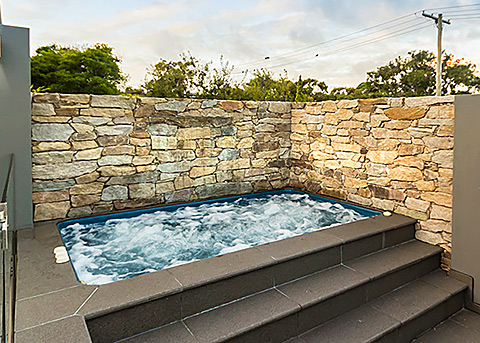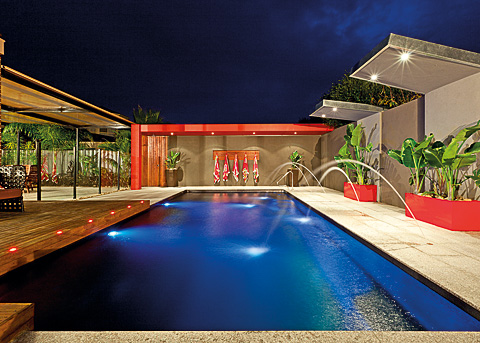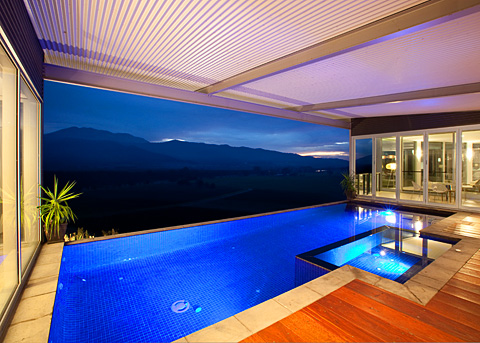Use the right people and ask the right questions
If there is one thing SPASA Victoria members know a lot about, it’s building pools and spas. It’s a complex process with a number of steps to move through. There are also certain legal requirements that must be met and it is critical that your intended builder meets them all. SPASA Victoria members stand ready to help at every step, but it’s a good idea to familiarise yourself with each one before you start.
STEP 1: LOOK FOR THE SPASA Victoria POOL BUILDER MEMBER LOGO
The SPASA Victoria Pool Builder Member logo signifies you are dealing with a company which is obliged to be registered, is suitably experienced and insured, and which is a current financial member of the industry peak body.
SPASA Victoria Pool Builder Members are the only builders who can issue a SPASA Victoria Pool & Spa Construction Contract. Based on the collective experience of our members the SPASA Victoria Contract is detailed but easily understood by the lay person, and it clearly explains any exclusions.
STEP 2: MAKE SURE YOU ARE INSURED
State law requires that domestic building insurance must be issued for all domestic building work over $16,000 in total value. SPASA Victoria recommends that you DO NOT commence any work until your builder has provided this insurance and you have the certificate in your possession, or ask to see the building permit and their builder’s registration card. The purpose of this insurance is to ensure that you are protected against an incomplete pool and / or spa and structural defects for up to 6 years in the event that your builder dies, disappears or becomes insolvent. Without it, you are totally unprotected and exposed in the event that your builder is unable to complete or rectify defects due to death, disappearance or insolvency. And if you sell your home you will be required by law to provide this transferable insurance to the purchaser.
STEP 3: ENSURE YOUR BUILDER IS REGISTERED AND LICENSED
To provide protection for every person having building works done, the Victorian government has legislated that builders undertaking work with a value over $10,000 must be registered with the Victorian Building Authority. So, before signing a contract please check if your builder is a Registered Building Practitioner, by asking to see their registration card, calling the VBA on 1300 815 127 or using the ‘Find a Practitioner’ menu at vba.vic.gov.au
STEP 4: ASK IF A TOWN PLANNING PERMIT IS REQUIRED
It is possible that town planning overlays may apply to the location of your proposed pool or spa. If so, a town planning permit for a swimming pool / spa at that address may be required before a building permit can be issued. Check with your local council before commencing any work. SPASA Victoria has successfully negotiated a general exemption for pools and spas where the following overlays apply: Design Development Overlays and Neighbourhood Character Overlays.
STEP 5: YOUR BUILDER WILL PROVIDE YOU WITH A COPY OF THE DOMESTIC BUILDING CONSUMER GUIDE
The Guide explains your rights and responsibilities and will help you to understand the roles and responsibilities of your builder and building surveyor.
You can learn more about the topics in the Guide and domestic building contracts generally at -
http://consumer.vic.gov.au/buildingguide
YOU MUST NOW APPOINT A REGISTERED BUILDING SURVEYOR.
Your builder can recommend a building surveyor, but cannot appoint a private building surveyor for you. SPASA Victoria have a resource of experienced pool & spa Registered Building Surveyors who are SPASA Victoria Professional Members – search for a registered building surveyor at
http://spasavic.com.au/member/surveyor
YOUR BUILDING PERMIT CAN NOW BE ISSUED.
Prior to the commencement of work, a building permit from a Registered Building Surveyor must be issued to the owner with the registered builder’s details. The purpose of this building permit is to ensure that your pool meets all the applicable requirements of your municipality’s planning scheme, relevant building regulations, Codes and Standards, including all relevant structural and safety requirements.
In order to obtain this building permit, the appointed building surveyor can provide advice on the minimum requirements of an application which includes the following information:
- Copy of the Certificate of Title
- Copy of the block plan showing all existing buildings
- A letter of authority for the builder to apply for a building permit on your behalf
- A signed agreement to comply with the requirements to provide a safety barrier / pool fence
STEP 6: SAFETY BARRIERS
Pool fencing / safety barriers are required by legislation for any pool or spa with water in excess of 300mm in depth and must be in place prior to filling the pool or spa with water. The key elements of the relevant Australian Standard, A.S. 1926-2012 are designed to deny access by unsupervised young children, especially those under 5 years of age, to the swimming pool area.
There is an expanded discussion of the fencing regulations on Fact Sheet 2 “Safety Barriers”, but it is worth noting here that fences and gates must have an effective minimum perpendicular height of 1.2 metres. Existing standard paling fences can be used provided they meet certain conditions.
Gates must open away from the pool enclosure and return to the closed position, engaging the latch automatically.
Although walls of buildings can be used as swimming pool safety barriers, child resistant doors from the building are no longer permitted for new pools. Windows within external walls of dwellings are permitted to open to the pool enclosure but must be constructed in accordance with the standard. Please refer to A.S 1926.1 for the specific details of the safety barrier and window requirements.
STEP 7: WATER
When thinking of investing in a pool or spa, the first step is to read up on our Water Neutral Pool Program. The pleasure derived from your pool need not impinge on water catchments. In fact, a Water Neutral Pool can provide you with a means of producing thousands of litres of surplus water for use around the home.
STEP 8: COMPLETION
Once the pool construction is complete according to the terms of your contract, your warranty period begins. At that point, your builder must issue you with a Completion Certificate. However that is not necessarily the end of the relationship. The pool is under domestic builder’s insurance for 6 years during which time you are able to check with your builder if you have any major concerns.
Buyer Beware: Kit Pools, Owner Builders & Unregistered Pool Builders
Kit pools installed by unregistered pool builders can leave homeowners with expensive legal bills, warranty, OHS and insurance issues.
The most effective way consumers can protect their financial and legal position is to use a builder registered with the Victorian Building Authority, specifically in the categories of ‘Domestic Builder – Unlimited’ or ‘Domestic Builder – Limited Swimming Pools’.
Without doubt the best way to ensure a stress-free experience is to use a SPASA Victoria Pool Builder Member.
There are three essential questions prospective pool or spa owners should ask –
1. Are you a Registered Building Practitioner?
2. Are you a SPASA Victoria Pool Builder Member?
3. Do you use a SPASA Victoria Pool Construction Contract?
Unregistered and inexperienced pool builders can talk unwitting homeowners into accepting all of the responsibility for occupational health and safety, building faults or structural failures of the pool or spa by getting them to become Owner Builders.
This means that the builder avoids having to provide domestic building insurance for work over $16,000 – which is mandatory for all registered pool builders.
It is illegal for any building work to be completed on a swimming pool, in excess of $10,000, without VBA registration and a compliant contract.
It’s usually only when the homeowner goes to sell their home, within six and a half years of the pool being built, that they find out they are legally bound to provide domestic building insurance before the sale can go ahead.
What most Owner Builders don’t realise is that they become liable for issues such as damage to a neighbour’s property, or a worker being injured on site. This could see the Owner Builder entangled in legal battles for compensation.
Warning: Don’t cut corners.
Download Fact Sheet 3 - Legislation, Regulation and Contracts



